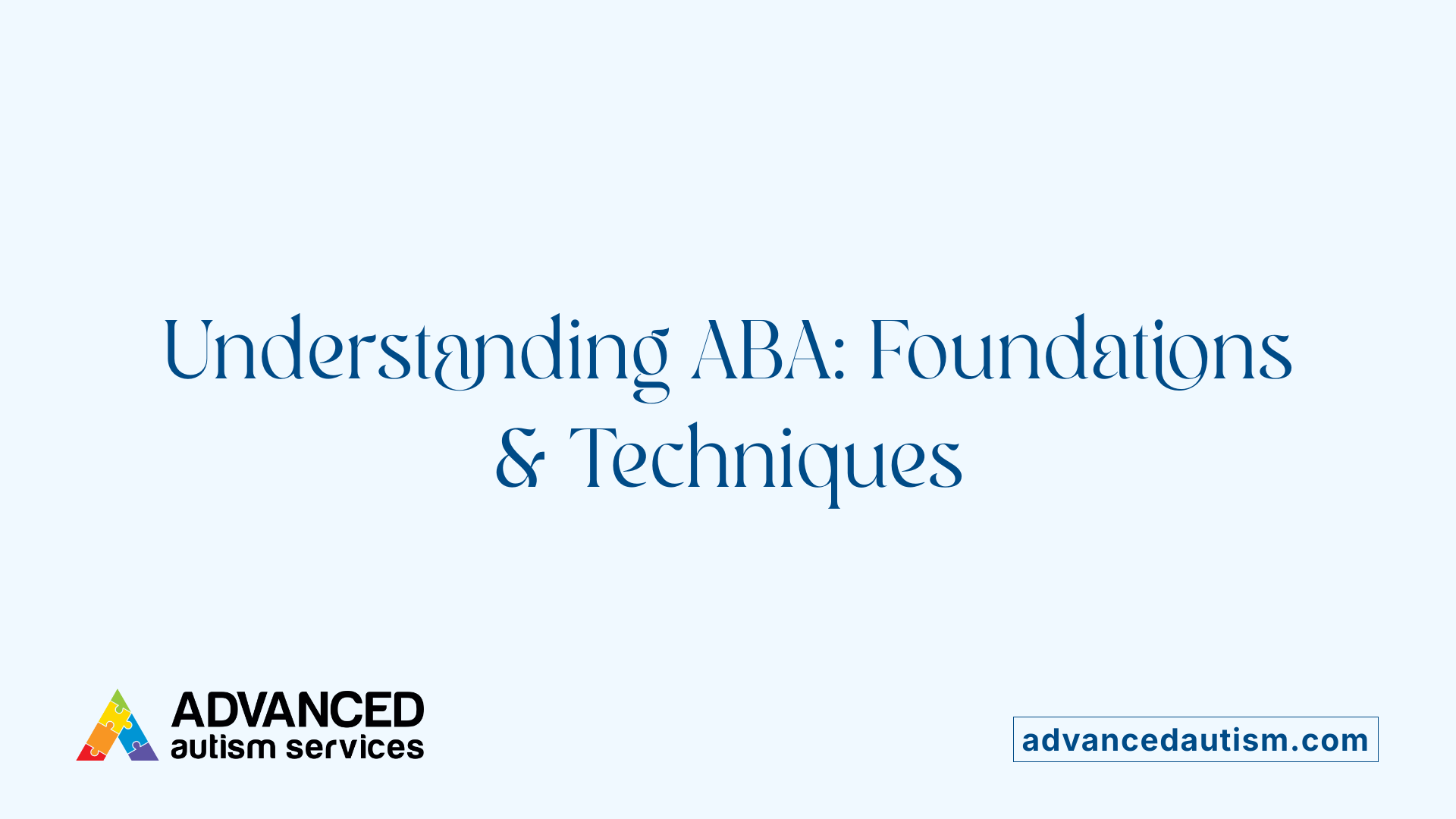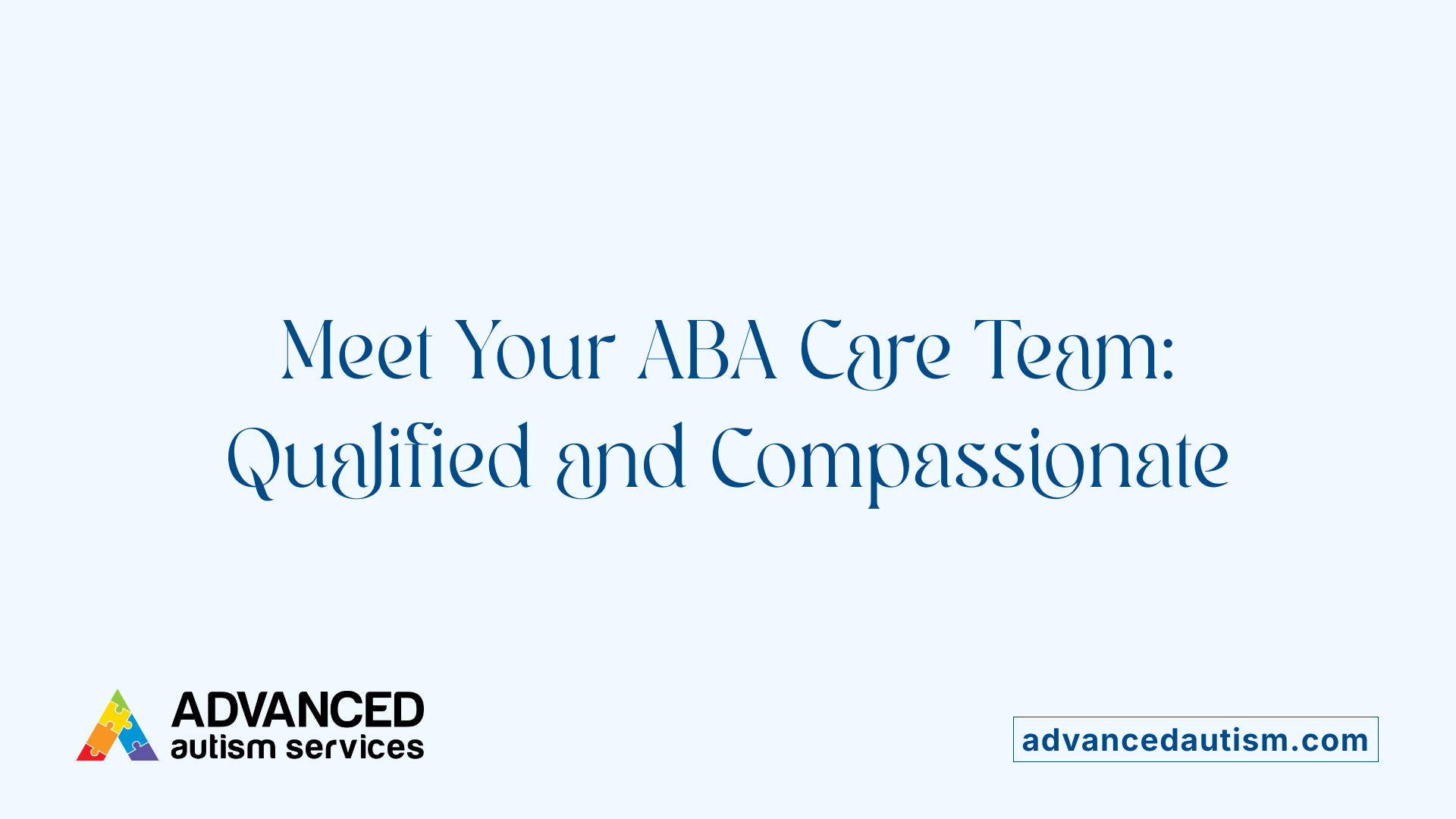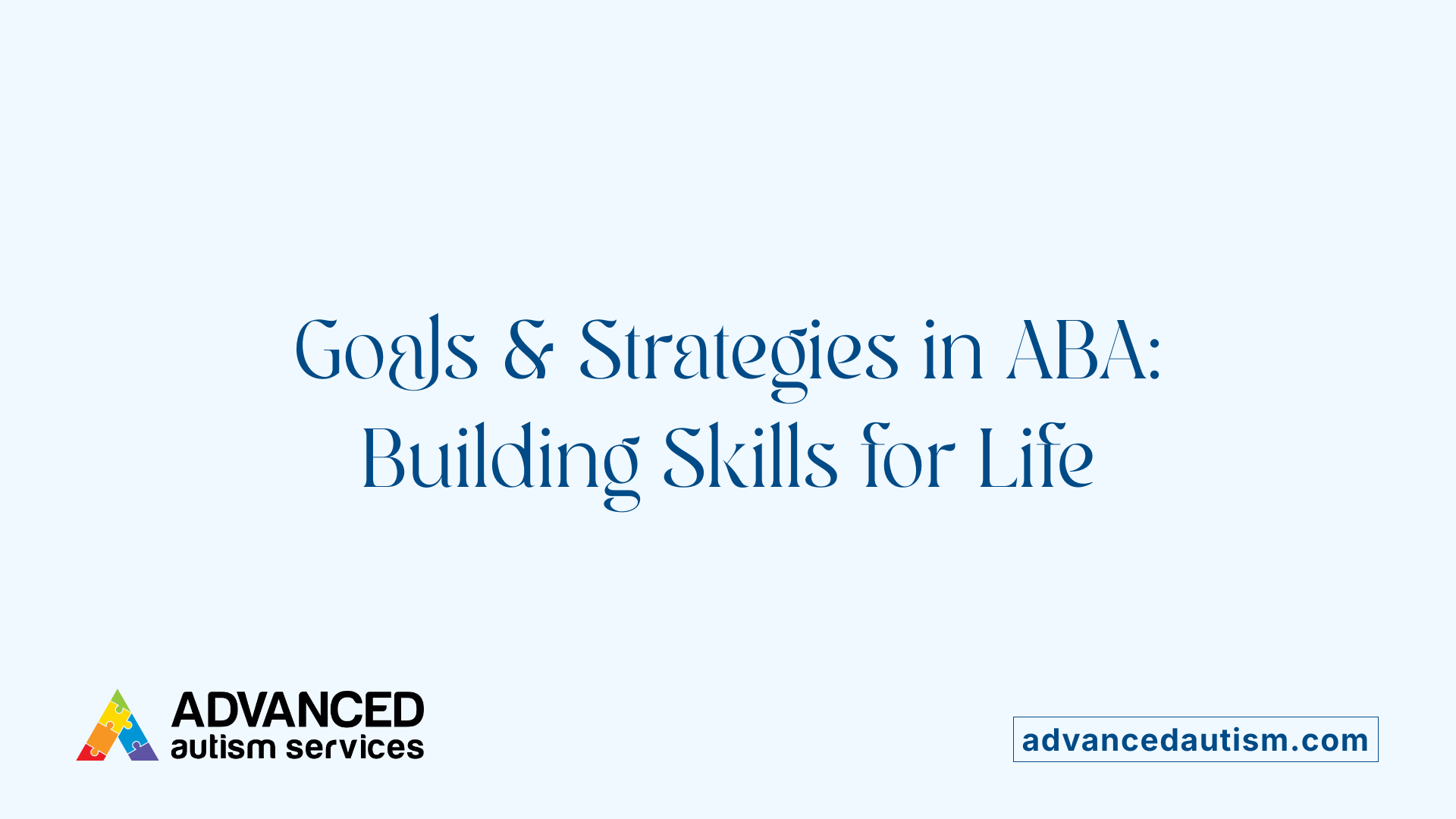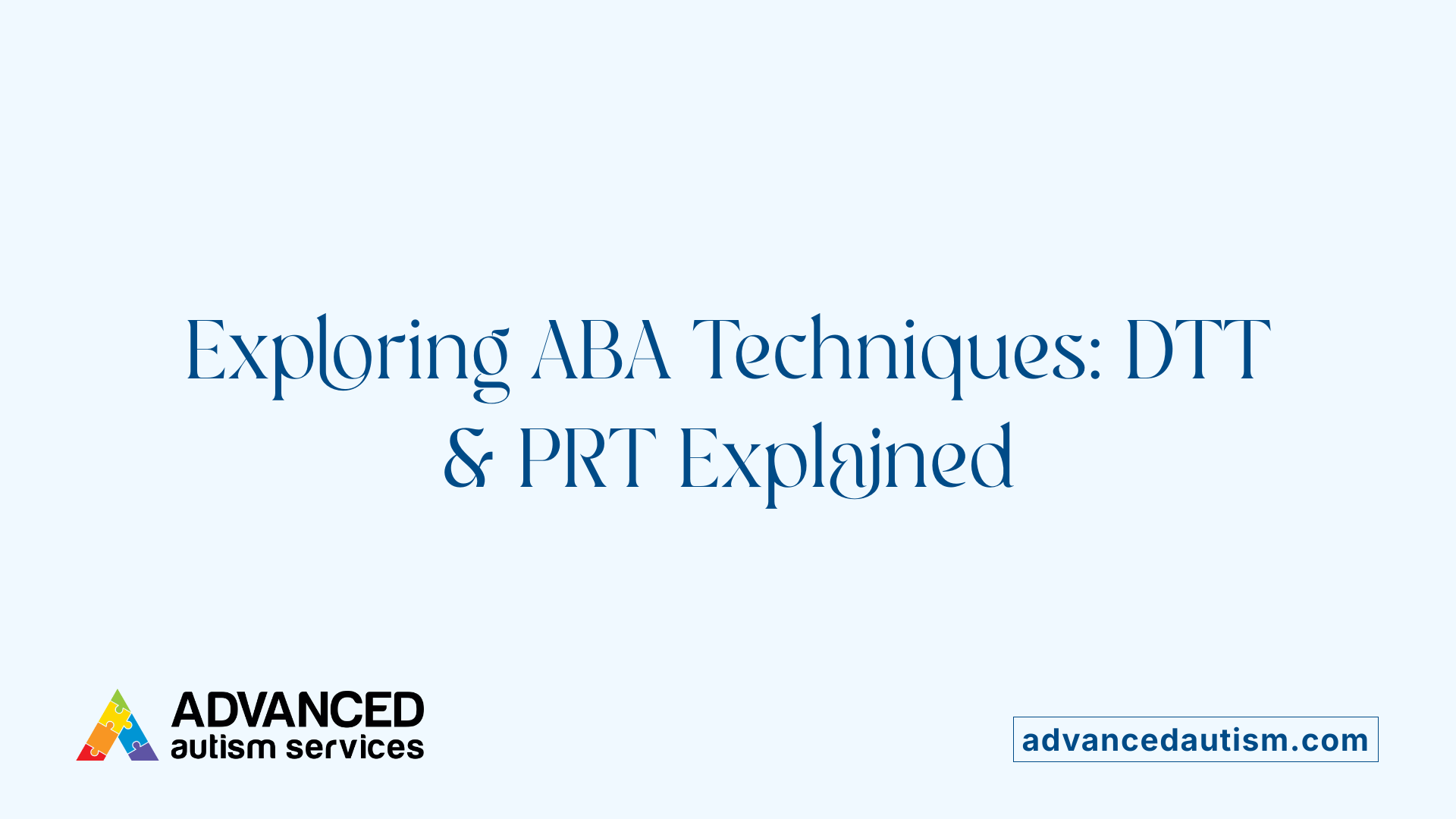Autism Therapy for Children
Breaking Down Barriers: How Therapy Empowers Children on the Autism Spectrum
Understanding Autism and the Role of Therapy
Autism Spectrum Disorder (ASD) presents unique challenges in social communication and behavior for children. Early and effective intervention through therapy is crucial for fostering meaningful development and improving quality of life. Among the various treatment approaches available, behavioral therapies—particularly Applied Behavior Analysis (ABA)—stand out as the most researched and widely endorsed methods. This article explores the landscape of autism therapy for children, focusing on the principles, providers, goals, and effectiveness of ABA, alongside complementary therapies and how families can navigate these options.
What Is Applied Behavior Analysis (ABA) Therapy?

Definition of ABA
Applied Behavior Analysis (ABA) therapy is a research-backed form of behavioral therapy rooted in learning and behavior science. It is designed to support individuals with autism by enhancing positive behaviors and reducing harmful or non-learning behaviors.
Use of Behavioral Principles
ABA employs core principles such as positive reinforcement—rewarding desired behaviors to increase their occurrence. Therapists analyze the ABCs of behavior: antecedents (what happens before), behavior, and consequences (what happens after), to understand and influence behavior effectively.
Purpose in Autism Treatment
The primary goal of ABA in autism treatment is to help individuals develop skills across communication, social interactions, self-care, play, motor abilities, and academics. Customized plans made by qualified Board Certified Behavior Analysts (BCBAs) tailor therapy to each person's unique needs.
Common ABA Techniques
Several evidence-based methods are commonly used in ABA therapy:
- Discrete Trial Training (DTT): A structured, step-by-step approach focusing on repetition and reinforcement to teach specific skills.
- Pivotal Response Treatment (PRT): A naturalistic, play-based strategy encouraging motivation and communication, targeting pivotal areas that produce widespread improvements.
- Early Start Denver Model (ESDM): A comprehensive, play-based early intervention using ABA principles for young children.
These techniques foster generalization of learned skills across settings such as home and school.
ABA's Scientific Foundation and Evolution
Since the 1960s, ABA has demonstrated long-term effectiveness through extensive studies. Early intensive ABA programs—often involving over 20 hours weekly—have shown significant developmental benefits. Over time, ABA has evolved from highly structured methods to more naturalistic, play-oriented approaches, emphasizing respect for individual differences and family involvement.
Together, these elements establish ABA therapy as an evidence-based, adaptive, and individualized intervention widely recognized by health and psychological organizations for treating autism spectrum disorder.
Who Provides ABA Therapy for Children with Autism?

Who typically provides ABA therapy for individuals with autism?
ABA therapy is usually delivered by trained and licensed professionals specialized in autism intervention. The central figure in ABA programs is the Board Certified Behavior Analyst (BCBA). BCBAs assess individuals with autism, design personalized treatment plans based on behavioral science, and oversee the therapy's implementation.
Role of Board Certified Behavior Analysts (BCBAs)
BCBAs hold specialized credentials that reflect expertise in applied behavior analysis. They conduct initial assessments, set measurable goals, monitor progress through data collection, and adjust programs to maximize individual outcomes. Their clinical oversight ensures that therapy remains evidence-based and effective.
Paraprofessionals and Registered Behavior Technicians (RBTs)
Day-to-day ABA therapy is often delivered by paraprofessionals, particularly Registered Behavior Technicians (RBTs), who directly interact with the child to implement intervention sessions. RBTs work under BCBA supervision and receive specific training to apply ABA strategies such as prompting, reinforcement, and discrete trial teaching.
Multidisciplinary teams and settings
ABA therapy can also be part of broader multidisciplinary care involving psychologists, speech-language pathologists, occupational therapists, and other specialists. Services are provided across various settings including clinics, schools, homes, and community environments. This collaborative approach ensures that social, communicative, motor, and adaptive skills are addressed comprehensively.
Importance of qualified provider selection
Choosing providers with proper credentials, ongoing supervision, and adherence to evidence-based practices is vital. Families should consider training standards, safety protocols, individualized goal setting, and regular progress monitoring when selecting ABA therapy providers. Qualified professionals help maximize therapy benefits and ensure ethical treatment delivery.
Common Goals and Techniques in ABA Therapy

What are Some of the Common Goals and Techniques Used in ABA Therapy for Autism?
ABA therapy is centered on personalized goal-setting tailored to the unique needs of each child. These goals typically focus on enhancing communication, social skills, self-care, play, motor skills, and academic abilities while reducing behaviors that interfere with learning or functioning.
A variety of skill areas are targeted in ABA programs:
- Communication: Developing expressive and receptive language skills, often incorporating alternative communication systems like the Picture Exchange Communication System (PECS), which allows nonverbal children to communicate using pictures.
- Social Skills: Encouraging interaction, turn-taking, joint attention, and play skills to improve social engagement.
- Self-care and Daily Living: Teaching routines such as dressing, eating, hygiene, and community participation.
ABA employs several evidence-based techniques to promote learning and behavior change, including:
- Positive Reinforcement: Rewarding desired behaviors immediately after they occur to increase their frequency.
- Discrete Trial Training (DTT): A structured teaching method breaking tasks into small, manageable steps with repeated practice and reinforcement.
- Natural Environment Teaching (NET): Teaching skills through natural, play-based interactions, promoting generalization of skills in everyday settings.
- The ABC Model: Analyzing behavior by examining what happens before (Antecedent), during (Behavior), and after (Consequence) to understand and modify behavior effectively.
ABA programs typically involve ongoing data collection and assessment by a Board Certified Behavior Analyst (BCBA) to monitor progress and adjust goals or strategies as needed. The integration of various teaching methods and individualized goals makes ABA a comprehensive approach designed to support skill development across multiple areas for children with autism.
Effectiveness of ABA Therapy in Autism Treatment

How effective is ABA therapy in the treatment of autism?
Applied Behavior Analysis (ABA) therapy is widely recognized as a highly effective treatment for autism spectrum disorder (ASD). Backed by decades of research starting from the 1960s, ABA is considered an evidence-based approach endorsed by authoritative health organizations. Numerous studies have demonstrated that ABA significantly improves social skills, communication abilities, and adaptive behaviors such as self-care and academic skills.
What impact does ABA have on social, communication, and adaptive skills?
ABA therapy programs are tailored to individual needs, aiming to increase positive behaviors while decreasing harmful or disruptive ones. Interventions such as Discrete Trial Training (DTT) and Pivotal Response Training (PRT) help teach important language, social, and motor skills. Positive reinforcement strategies encourage children’s motivation and engagement, leading to meaningful improvements in how they interact socially and communicate. Alongside social growth, ABA also fosters better focus, memory, and daily living skills, helping children become more independent.
Why is early intensive ABA treatment important?
Early and intensive ABA therapy—often involving more than 20 hours per week during the first few years of life—has been linked to larger developmental gains and a reduced need for extensive future services. Programs like the Early Start Denver Model (ESDM) combine traditional ABA techniques with play-based and naturalistic methods, showing particularly promising outcomes for young children aged 12 to 48 months. The earlier and more consistent the therapy, the greater the potential for lasting positive effects.
What role do parental involvement and individualized programming play?
ABA programs are carefully designed and overseen by Board Certified Behavior Analysts (BCBAs), who conduct thorough assessments and continuously adjust treatment plans based on collected data. Parental participation is crucial to reinforcing learned skills in everyday environments, ensuring that progress generalizes beyond therapy sessions. This individualized and collaborative approach helps tailor the interventions specifically to each child's unique strengths and challenges.
Are there limitations and how is ABA evolving?
While ABA is highly effective, it is not a cure-all and outcomes can vary. Some critiques involve concerns about the traditional structure of ABA; however, contemporary practices emphasize naturalistic and child-centered approaches to promote engagement and reduce rigidity. ABA therapies continue to evolve with ongoing research supporting more flexible, motivating, and socially relevant interventions.
| Aspect | Summary | Details |
|---|---|---|
| Evidence base | Strong, decades of research support | Controlled trials show significant gains in social and communication domains |
| Social & communication skills | Enhanced via DTT, PRT, and early start models | Positive reinforcement bolsters motivation and functional interaction |
| Early intervention | More hours early on yield better developmental outcomes | Early Start Denver Model is a proven approach for toddlers |
| Individualization & parents | Customized plans and active family role critical | BCBA supervision ensures tailored goals and ongoing progress monitoring |
| Limitations & evolution | Outcomes vary; methods evolve toward naturalistic ABA | Modern ABA integrates play-based, flexible techniques to increase child engagement and skill transfer |
Variations Within ABA: Discrete Trial Training and Pivotal Response Treatment

What is Discrete Trial Training (DTT)?
Discrete Trial Training (DTT) is a highly structured method used in ABA therapy. It breaks skills into small, manageable steps, teaching each step one at a time. This approach relies on repetition and clear, step-by-step instructions, often with prompts and immediate positive reinforcement to encourage learning. DTT sessions are typically controlled and focused, aiming to build specific skills through consistent practice.
How Does Pivotal Response Treatment (PRT) Differ?
Pivotal Response Treatment (PRT) takes a naturalistic, play-based approach to ABA. Unlike the rigid structure of DTT, PRT occurs in the child’s everyday environment and flows more flexibly, following the child’s interests and motivations. It targets pivotal areas such as motivation and self-initiated communication, encouraging children to engage socially in more natural settings. Reinforcements in PRT are closely tied to the child’s own preferences, making the learning experience enjoyable and relevant.
Comparing Structured and Naturalistic Approaches
The main difference between DTT and PRT lies in structure and setting. DTT’s controlled environment and repetition aim to teach discrete skills efficiently, while PRT emphasizes generalization of skills in real-world contexts by fostering natural motivation and social interaction. Both approaches avoid punishment and focus on reinforcing positive behaviors.
Why Combine DTT and PRT?
Many ABA programs integrate both methods to balance their benefits. DTT offers clear, measurable progress on specific tasks, which helps establish foundational skills. Meanwhile, PRT promotes broader social and communication gains by applying those skills in natural situations. Together, they provide a comprehensive framework supporting skill acquisition and real-life application, enhancing overall therapy effectiveness.
Complementary Therapies Supporting Autism Treatment
What Are Speech and Language Therapies?
Speech and language therapy is crucial for enhancing communication abilities in individuals with autism spectrum disorder (ASD). Licensed speech-language pathologists work on improving verbal skills, non-verbal communication like gestures, and alternative communication methods such as sign language or picture exchange systems. These therapies help children express needs and interact socially more effectively.
How Does Occupational Therapy and Sensory Integration Help?
Occupational therapy focuses on building daily living skills tailored to each individual's needs, including dressing, eating, and writing. An important part is sensory integration therapy, which addresses the sensory processing challenges common in ASD. This therapy helps individuals better interpret and respond to sensory stimuli, improving comfort and function in everyday environments.
What Role Does Physical Therapy Play?
Physical therapy aims to improve gross motor skills, coordination, balance, and body awareness. These physical skills support independence and activity participation. Physical therapy is often integrated into early intervention programs, helping children with motor delays to develop more confidence and physical competence.
What Are Developmental Models Like the Early Start Denver Model (ESDM)?
The Early Start Denver Model (ESDM) is a comprehensive developmental approach for children aged 12 to 48 months. It combines naturalistic play and social interactions with ABA principles. ESDM encourages early learning of language, social skills, and cognitive abilities and involves active parent participation, which boosts intervention effectiveness.
How Do Social-Relational Therapies Target Interaction and Emotional Bonding?
Social-relational therapies, such as DIR/Floor Time, RDI, and Social Stories, focus on promoting social skills and emotional connections. These approaches often involve parents and peers to foster natural interactions and improve emotional understanding, supporting more meaningful social engagement for individuals with ASD.
What Is the Role of Medications for Co-occurring Symptoms?
Medications do not treat the core symptoms of autism but can manage co-occurring challenges such as anxiety, irritability, aggression, or seizures. FDA-approved medications like risperidone and aripiprazole help reduce irritability and behavioral issues, enabling better participation in therapies. Medication management should be coordinated with behavioral treatments for optimal outcomes.
Navigating ABA Therapy: Assessment, Planning, and Monitoring
Role of Board Certified Behavior Analysts in Assessment
ABA therapy begins with a thorough assessment performed by a Board Certified Behavior Analyst (BCBA). The BCBA evaluates the individual's behaviors, strengths, and needs to understand how best to support learning and development.
Development of Personalized Treatment Plans
Based on the assessment, the BCBA crafts a personalized treatment plan tailored to the individual's unique goals in areas such as communication, social skills, self-care, and academics. This ensures interventions are relevant and effective.
Importance of Goal Setting and Data Collection
Clear goal setting is fundamental, allowing progress to be tracked meticulously. Data collection during therapy sessions helps monitor improvements in targeted behaviors and skills over time.
Program Adjustments Based on Progress
ABA programs are dynamic. The BCBA regularly reviews the collected data to adjust goals and strategies, optimizing therapy to the individual's evolving needs and ensuring continued growth.
Insurance Considerations and Accessing Services
Insurance coverage for ABA therapy varies, with many plans including Medicaid and some private insurers when treatment is medically necessary. Families seeking services should consider provider qualifications, supervision standards, safety, and how individual goals are established and monitored.
Addressing Misconceptions and Ensuring Ethical ABA Practice
Common myths about ABA (normalization, bribery, animal training)
Applied Behavior Analysis (ABA) therapy has sometimes been misunderstood due to common misconceptions. Some critics mistakenly view ABA as an attempt to "normalize" individuals with autism by forcing conformity, or liken its methods to training animals. Others perceive its use of rewards as bribery. These ideas fail to reflect the true nature of ABA, which focuses on meaningful and functional improvements tailored to each individual's unique needs rather than conformity to arbitrary norms.
Emphasis on socially significant behaviors and positive reinforcement
The core of ABA lies in promoting socially significant behaviors—those that improve quality of life and functional independence. Positive reinforcement, not punishment, is the primary tool used to encourage these behaviors. Rewards are carefully chosen to motivate and teach new skills, helping individuals develop communication, social interaction, and self-care abilities. Modern ABA practices avoid punitive measures, emphasizing ethical treatment and respect for the individual.
Evolving practices avoiding punishment
Historically, some ABA approaches included aversive techniques, but contemporary ABA strictly rejects punishment-based methods. Instead, therapy focuses on positive strategies like prompting, natural reinforcement, and skill generalization. This evolution reflects ongoing research and a commitment to humane, effective treatment.
Family involvement and respect for individual needs
ABA programs are personalized and designed with input from families, ensuring goals align with each person’s strengths, preferences, and life context. Families play an active role in therapy, reinforcing skills at home and promoting consistency. This partnership fosters respect, empowerment, and better outcomes, countering ideas that ABA is rigid or dehumanizing.
The Future of Autism Therapy for Children
Autism therapy, anchored by the robust methodologies of Applied Behavior Analysis, continues to transform the lives of countless children and families. By combining individualized behavioral strategies with complementary therapies and ongoing research, practitioners strive to optimize developmental outcomes and foster independence. Early diagnosis and timely intervention remain paramount, supported by skilled professionals who tailor approaches to the unique profiles of each child. As therapies evolve, greater emphasis on naturalistic, respectful, and engaging models promises to further enhance effectiveness and acceptance. Families seeking autism therapy for their children can find hope and support in this well-founded and ever-advancing field.
References
- Applied Behavior Analysis (ABA)
- Treatment and Intervention for Autism Spectrum Disorder
- Applied Behavior Analysis (ABA)
- Behavioral Management Therapy for Autism
- Treatment of Autism Spectrum Disorder in Children and ...
- Evidence-based Treatment Options for Autism
- The effectiveness of applied behavior analysis program ...
- Applied Behavior Analysis (ABA)
- The Controversy Around ABA







